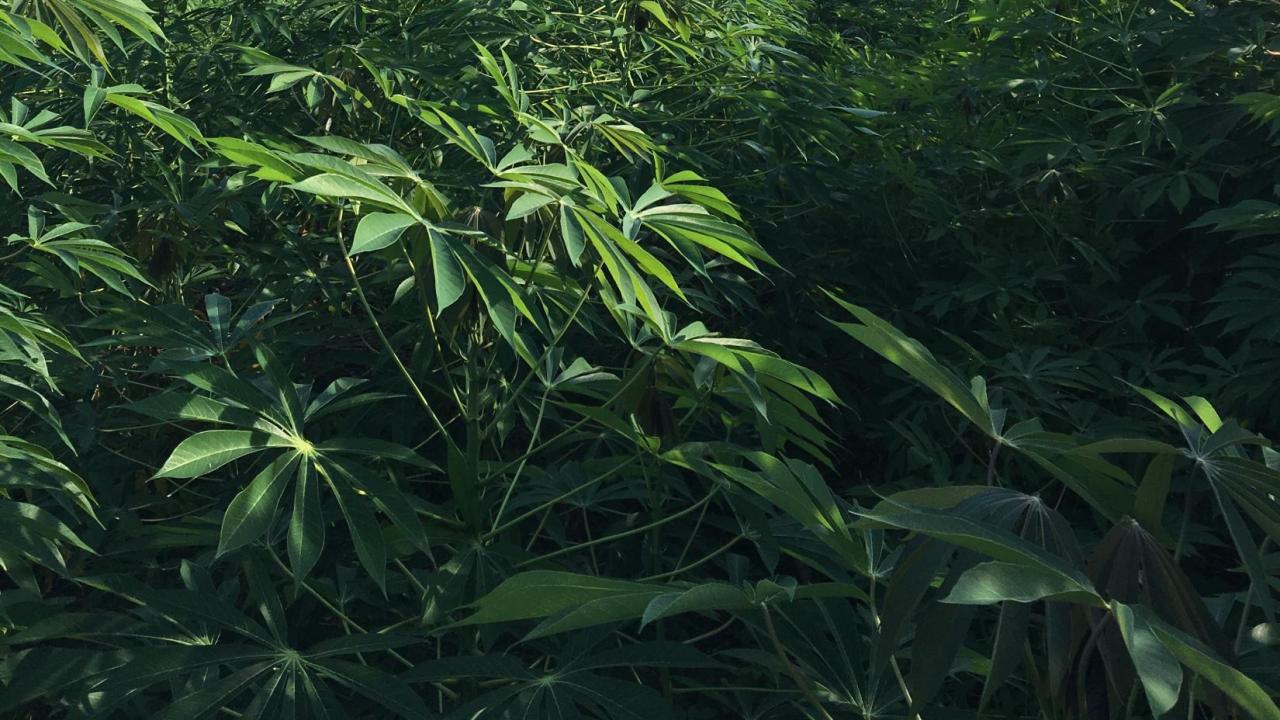
Leah Puro travels to Viet Nam through the support From Jastro Fellowship and RIFA
Through the support from the Henry A. Jastro Fellowship and the Research and Innovation in Agriculture Fellowship, I collaborated with the International Center for Tropical Agriculture (CIAT) to conduct research in Northern Vietnam. The project seeks to investigate and report the economic and environmental costs and benefits of two cassava management practices in the mountain region of Yen Bai. In Vietnam, 60% of agricultural land is covered in mountains and plateaus, making land vulnerable to increased runoff, soil erosion, degradation, and declining crop yields. The topography combined with the condensed and heavy rainy season (May – October) further jeopardizes the productivity of marginal agricultural land. This project targets cassava growers, as much cassava is grown on sloped or degraded land due to the resiliency of the crop.
My study is part of a larger CIAT project that aims to integrate climate smart technologies into traditional agricultural practices to improve agricultural resiliency among smallholder cassava farmers in Southeast Asia. The Climate Smart technologies were tested and chosen in collaboration with growers in the initial study in 2002. During the initial intervention, participatory land mapping and soil surveys were conducted to assess current and historical land- use types, local soil types, and future land use preferences. With this data, ten climate smart technologies were chosen by the CIAT team and presented to local farmers. The farmers prioritized the technologies in terms of perceived benefits and chose seven practices to test. Planting grass strips (paspalum) along contour lines on sloped cassava fields was one of the chosen and widely adopted practices. These grass strips are planted for the dual purpose of decreasing soil erosion and providing fodder for livestock.
In August 2016, I traveled to Van Yen District to conduct the fieldwork. Van Yen was one of the districts where high adoption of the practice occurred during the initial implementation in the early 2000s. I collected socioeconomic, input and output data, and soil samples from cassava growers. The three cropping systems included; monocrop cassava production, grass-strip and cassava intercrop implemented five to seven years ago, and grass-strip and cassava intercrop implemented ten to twelve years ago. The chosen cassava plots had to be on slopes of 20% - 40%. Across three communes, 15 farmers were selected that fit within each of the three criteria, resulting in a sample of 45 farmers total. At the commune level, 5 farmers who practiced monoculture were chosen, 5 farmers who practiced the cassava grass intercrop for 5 – 7 years were chosen, and 5 farmers who practiced cassava grass intercrop 10 – 12 years were chosen. Soil samples, GPS coordinates, slope, and aspect were collected on each cassava plot to gather soil level information about the effects of each of the three cassava practices in the area. From each section of the slope, top, middle and bottom, soil was collected at two depths, 0 – 20 cm, and 20-30 cm. These samples were analyzed for texture, pH, total organic carbon, total nitrogen, available phosphorous, exchangeable cations (Mg, Ca, Na, K) and bulk density. The results of the soils samples will be used with the Revised Universal Soil Loss Equation (RUSLE) to model soil erosion with the different practices. Through the socio-economic survey and the soils data, I will be able to monitor the biophysical impacts of the two cassava systems, in addition to evaluating the economic, social and environmental impacts of these two systems. The results will lead to recommendations, workshops, and provide support and feedback to growers, CIAT, and agricultural extension of the practices effectiveness.
The support from the Jastro award funded an interpreter to help conduct the surveys, a field assistant to assist with the soil sample collection, transportation of 270 soil samples to be analyzed in Hanoi, Vietnam, and analysis of the soil samples.